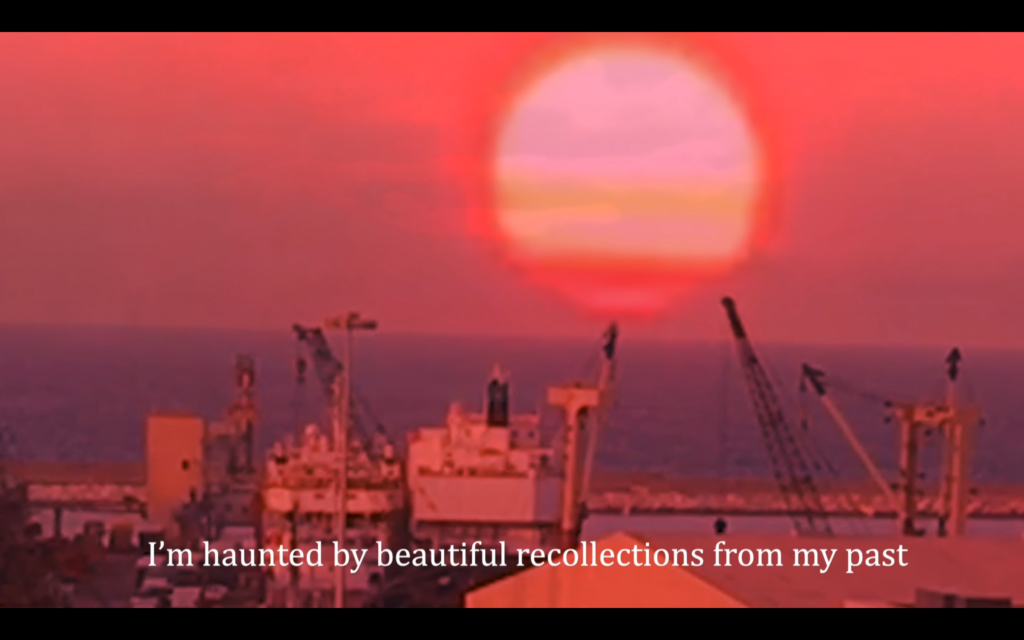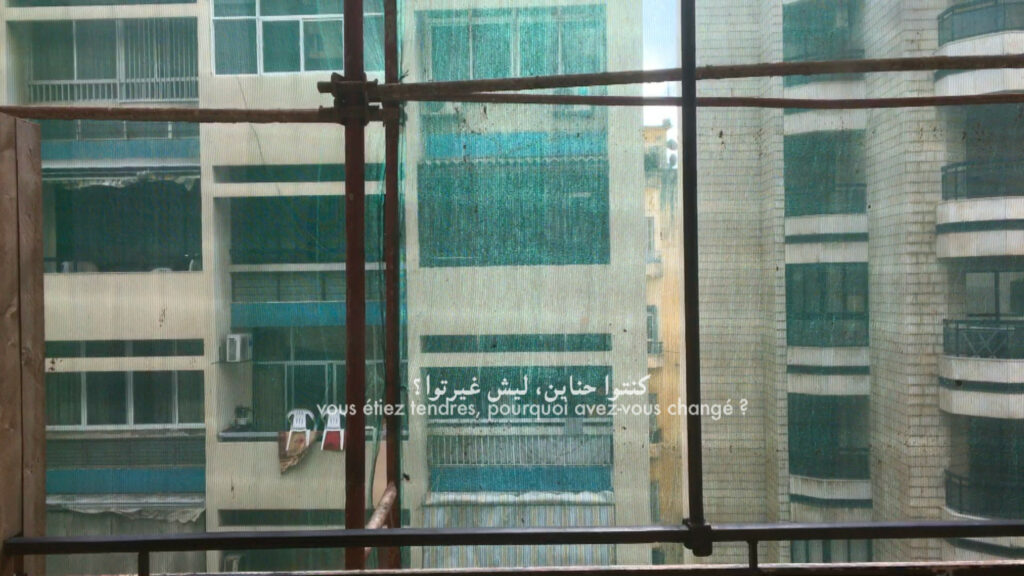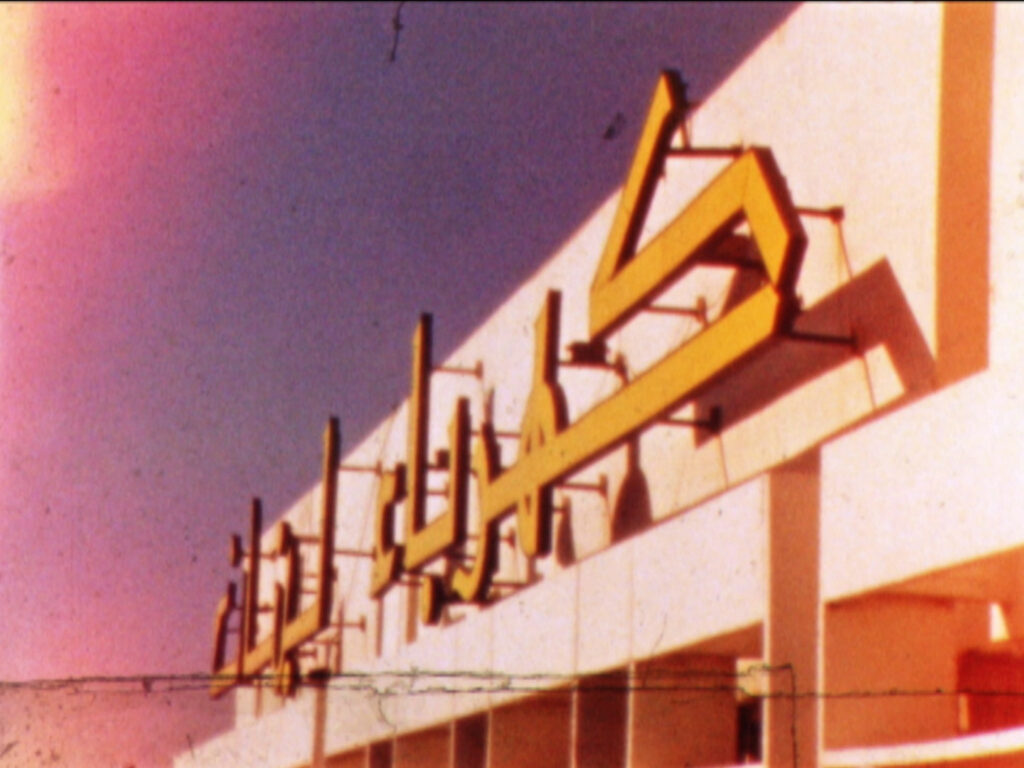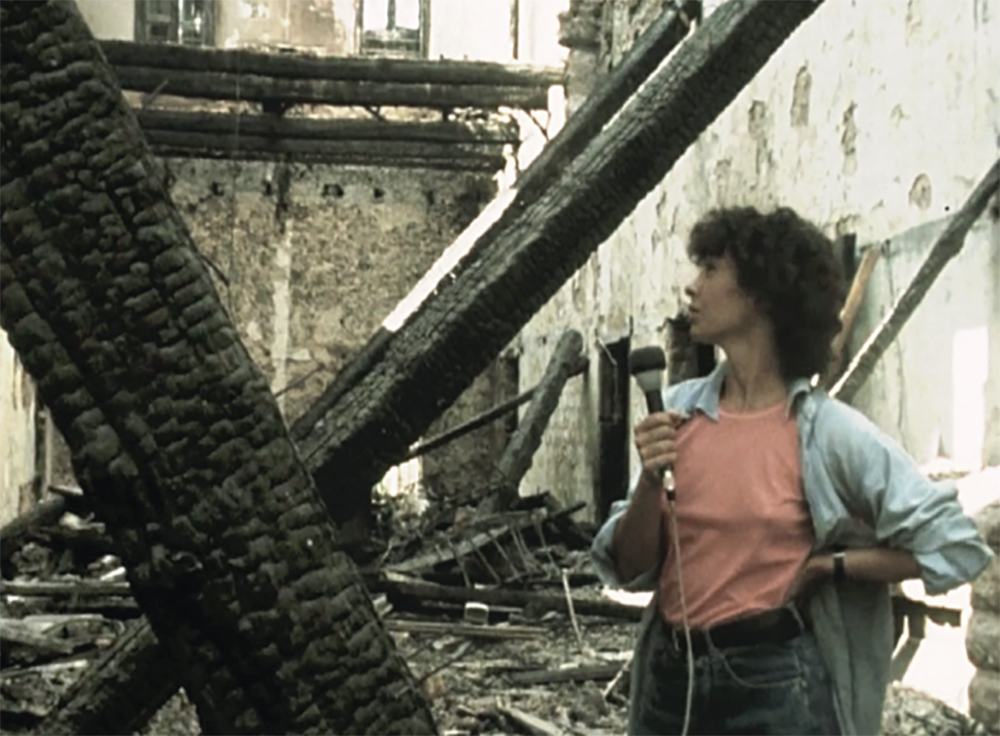The Counter-Archive as Network: An Assembly of Voices Mapped Through Time and Space
…the epistolary being a genre built around separation. Surrendering to that distance paradoxically draws me closer. I’m glad we’re having this conversation…[Mirene Arsanios]
I don’t know how to refer to it. I keep writing bomb and then I remember no, explosion, but somehow that doesn’t capture the fundamental violence of it. [Lina Mounzer][1]
What does it mean to bring an archive to life? The action implies a wresting of material from a dusty repository, performing a resuscitation on the long-dead. Of course, contemporary archival practice involves more than the storage of lifeless information, in dissent from what Ariella Aïsha Azoulay references as the falsely “neutral procedures”[2] of Western archival tradition in the handling of documents and objects of significance, especially those that have been wrongfully expropriated, and sealing them off as though they eclipse time and place. Yet in Europe, while the contents of an archive may be questioned and critically examined, the existence of the archive itself is often taken for granted; in contexts where official archives are absent the form comes more obviously under scrutiny. Azoulay’s later assertion that “the archive is people”[3] — a notion both immaterial and embodied — usefully applies here, particularly when looking at occurrences that appear, at least at first, to bear little resemblance to archival practices at all, consistent with what Annabelle Aventurin and Léa Morin have designated “the non-aligned”[4].
The travelling/networked film screening is a form of counter-archive that cuts across temporal and geographic boundaries. As a quasi-archival arrangement, it resists being thoroughly inventoried by a quantitative process that is on the whole exclusionary and selective, and one which assumes the past is in the past. The wayfaring archive is rather alive and generative, amorphous and variable; it is a social conveyance that modifies as it moves. An example: the solidarity-film-screening Beirut over and over again | Beyrouth plusieurs fois, a fundraising initiative developed in the aftermath of the 2020 explosions in the Beirut port. Its principle objective was to materially support relief organizations on the ground — such as Egna Legna Besidet, SAWA for Development and Aid, and the Lebanon Solidarity Fund by the Arab Fund for Arts and Culture (AFAC) — though its tone struck an emotional register, calling attention to political misconduct in Lebanon and advocating for de-centralized mutual support.
While it was active, Beyrouth plusieurs fois functioned as a “trans-local” community fundraising event, journeying to several cities worldwide, each instalment realized with friends and allies. It showcased a variety of films throughout its numerous iterations, both contemporary and classic, and through its programming drew strong links between historical events in Lebanon — the 1975-90 Civil War in particular — with those more recent. The screening challenged whatever there may or may not be in terms of a national discourse on Lebanese history, in a country whose authorities have erased history’s traces in a masking of successive political conflicts (consciously grassroots, the travelling screening interferes in this hard-boiled stifling of the past). Though rather than indulge images of misery, the intention of Beyouth plusieurs fois was to present films that portray Beirut as it was and is in the lived experiences of those who have known it, resisting a depiction of the city as a burning metropolis under a mushroom cloud of ammonium nitrate, as seen in the images circulating virally at the time.
The program was framed by a central question: how do Beirut’s inhabitants perceive this imperishable yet fragile place? By design, Beyrouth plusieurs fois travelled laterally through networks of friends and allies. There was a strict opposition to any gratuitous absorption into an institutional framework, lest the initiative be flaunted as a charitable humanitarian effort by those in positions of power. As the screening moved between locales, it accumulated visual material as well as contributors, operating as a living archive of memory, experience and cinema, animated through a nexus of people across time and space as films were shared and re-contextualized. In many respects Beyrouth plusieurs fois took on a life of its own, constituting an adaptable body of collective knowledge.
A selection of films
In Berlin, Beyrouth plusieurs fois opened with Prologue (2019) by Hassan Julien Chehouri, a video consisting of a single 32-second shot of a sunset over the Beirut port, taken with a mobile phone camera. Against a fuchsia sky, cranes reach toward the enormous orb of the sun hanging low on the horizon, bathed in an unworldly pink glow. This is industry in polychrome. The port appears hazy and distant, scarcely operational, despite being one of the busiest ports on the Eastern Mediterranean. It seems impossible that a tremendous number of explosives lies somewhere along the same shoreline. There is a foreboding to this dreamlike scene, however, and the video plays to poignant effect. “I am haunted by beautiful recollections from my past,” reads a caption along the bottom of the screen, a sentiment that refers to nothing directly, but is nevertheless an apt springboard for the program to follow. As do many of the films in this program, Prologue alludes to an historical relationship between the conditions of contemporary Beirut and the city’s difficult past, suggesting that Lebanon’s current political dysfunction has a long-standing precedent. Hovering over Beirut’s industrialized seaport, the camera lens remains fixed on the modernizing force of international trade that has been all too productive in stratifying Lebanese society. In this respect, Prologue makes room for contemplation about how the spectres of earlier political struggle and oppression in Lebanon have set the damaging conditions for its present.

على قد الشوق | Le Voyage Immobile | As Far As Yearning (2017) came next, produced jointly by Ghassan Salhab and Mohamed Soueid. The video is a poetic and abstract exchange between old friends who ruminate on the changing face of the Beirut they once knew. Subtitled in English, French and Arabic, the video makes circuitous reference to the modern experience of the city, depicting workers on a demolition site captured from the passing window of a train, politicians on television screens, shots of airport vehicles shuttling across expanses of tarmac, the interior of a high-rise apartment – images of human life in alienation, though there is no direct narrative reference to the visuals on the screen. The video does not focus on any protagonist in particular, and it seems possible that Beirut itself is being addressed by the narrators’ wistful thoughts. The exchanges between two friends communicating across distance – through video conferences, through telephone calls – recalls the program’s methods of building international solidarity via social networks.

Following Salhab and Soueid’s work was E.D.L. (2011) a silent Super 8 film critiquing Lebanon’s perpetually failing National Electricity service. The film focuses on the utility company’s central office in Beirut, a modernist construction that the filmmaker, Siska, associates with the creation of Lebanon’s modern state. The central themes of Salhab and Soueid’s video are present here too, with the implication that behind the elegant facade of the National Electricity building is a disorderly and ineffective state service – further evidence that Lebanon’s project to modernize has not been entirely successful. Continued collapses of Lebanon’s electrical grid throughout 2021 (a symptom of ongoing fuel shortages) render Siska’s take all the more affecting.

An anchor to the Beyrouth plusieurs fois program was the third instalment of Jocelyne Saab’s ‘Beirut Triology’, Beyrouth, ma ville (1982), an essay-documentary produced in collaboration with the Lebanese playwright Roger Assaf. In the opening scenes, Saab stands in front of the wreckage of her family home, a casualty of one of the largest Israeli airstrikes on Lebanon during the 1975–90 Civil War. She clasps a microphone in one hand, affecting a reporterly stance as though the incinerated building behind her were not just a matter of personal devastation, but news, symbolic of the wider and relentless destruction throughout Beirut during this time. Assessing the damage, she ambles through the dilapidated skeleton of the house – a stately two-storey building bombed beyond recognition, its wooden beams splintered and creaking and its great stone ornaments converted to rubble – while puzzlingly ordinary street sounds drift through glassless window frames. Trying to discern something of its former structure, Saab identifies the studio where she had been developing another film project, remarking how central this home was to her identity: its considerable history, its capacity to shelter and secure its inhabitants, its provision of a sense of place. Still, she says, “It’s not so bad, they’re only walls. And we all escaped alive.”[5]

Cut to aerial footage of explosions over Beirut. Massive clouds of noxious smoke billow into the atmosphere, erupting from places where bombs have dropped. These images are interspersed with interior shots of rescue crews searching for survivors, and wounded patients in emergency hospitals, their faces waxen, bandaged and ballooning; they are difficult sequences to watch. While filmed nearly four decades ago, the first scenes of Beyrouth, ma ville possess an uncanny resonance with the explosions of 2020, which left large areas of the city virtually unrecognizable, much of central Beirut razed to the ground. The image of Saab surveying the devastation of her home in 1982 could equally have been tens of thousands of other bewildered and displaced people who woke to find their city in ruins on a summer morning in 2020.
Saab belongs to a generation of filmmakers in Lebanon whose burgeoning film careers coincided with the Civil War, their development as artists practically informed by turmoil. She was a participant in establishing the Third Cinema movement in the Middle East, documenting political and social struggle, but also turning an incisive eye on the question of what the Arab world was becoming as the twentieth century edged onward. In particular, Saab was among a cohort of young women – including Selma Baccar and Nabiha Lotfy – who were beginning to find agency in cinema, through producing their own work and developing distinctive cinematic styles, and who undertook to document their lived experiences in a continued fight for social revolution. As a former frontline journalist, Saab was committed to freedom, and her early films of this time were defined by an almost desperate attempt to document a free Beirut before it was destroyed. “I have to constitute a memory of my country,”[6] she explains years later in an interview, revealing the same impulse to document that distinguishes contemporary Lebanese artists like Walid Raad and Akram Zaatari.To this end, the film’s inclusion in the Beyrouth plusieurs fois program strongly suggests that the condition of Lebanon now is a direct result of this earlier period: the same political figures are still in power, the repercussions of the Civil War continue to reverberate around the country, and the same tenacious commitment to social and political freedoms is exercised by Beirut’s citizenry. The historical connections drawn between the two periods of conflict insist on the value of collective memory in opposing degenerate systems of governance.
As a collection, Beyrouth plusieurs fois addresses the decades of political mismanagement that have led to the 2020 port blast, presenting evidence that longstanding misconduct of the Lebanese state has culminated in something highly destructive, though feasibly preventable. Fundamentally, the work of the program involves aiding those on the ground when direct action is an impossibility, yet it also activates a form of non-aligned- or counter-archive that balks at crooked governance. The building of solidarity through film, then, is an expansive gesture: in the first place it facilitates a pooling of financial resources, but it also makes room for more nuanced expressions of devotion and care, representing Beirut — and Lebanon broadly — in a series of emotions, affects, and personal experiences across a spectrum of good and bad. The program also extends a hand outward to communities beyond those that have personal connection to the catastrophe, fostering solidarity between neighbors and strangers. It is a small gesture of rebellion that defends independent thought and transmits a methodology of resistance. The focus of Beyrouth plusieurs fois may be on the fate of the city and its inhabitants, but the action is transnational. Perhaps anti-national. The exporting of material across borders (here is where the digital format, a feature of our ongoing Covid era, proves most useful) involves a linking of communities that supplants or resists subjugation by government authority. This is surely what Azoulay refers to when she writes of “…the flourishing field of alternative and counter histories.”[7] Quinn Latimer reflects this same spirit in his text on artist Akram Zaatari, noting: “By zooming in on the small, everyday reality of a place Zaatari counters the manipulative action of so-called Grand Narratives…he manifests in a poetic way his scepticism toward an official national representation: through the metaphorical language of refusal.[8]”
This language of refusal equally fortifies a manifesto written to support the program, titled Justice for the victims, vengeance against the regime, and the only paper document of the travelling counter-archive. Written collectively by activists, organizers and inhabitants of Beirut, the manifesto was perhaps the most charged and emotive file of the entire operation, spoken aloud only by those who have direct relation to the words written, and otherwise distributed as leaflets or projected as a multilingual text onto blank walls. An Arabic voice recording occasionally stood in for a live orator. The act of speech was an embodied component to the exposition of these films: whoever vocalized the manifesto became a conduit for a collective voice that reproached Lebanon’s political leaders and articulated a spirit of resistance. The audience is left to ponder: what kind of knowledge is produced through images? There are uses of images to corroborate a so-called Grand Narrative, even when in the Lebanese context government interest would see most history eliminated from national consciousness, and there is the use of marginalized images to defy and expose the untruths of official discourse. Borrowing from Avery Gordon’s Hawthorne Archive: Letters From the Utopian Margins, the travelling film screening Beyrouth plusiurs fois was something like a “…fugitive space for the development of a political consciousness of being,[9]” a counter-archive which demanded no less than a frank recognition of history in order to overturn the cycles of illicit politics. The program recognized the power of images to speak volumes, as well as the power of citizen communities to enact that speech, engaging what Olivier Marboeuf elegantly calls “[the] revolution of cinema as witness and inventor of a society.[10]”
An earlier version of this essay was published in Another Gaze Issue 05, November 2021.
This contribution is published in the framework of the Whole Life Academy.
- “Writing in Crisis: A Conversation Between Beirut and New York. Lina Mounzer and Mirene Arsanios on What It Is to Bear Witness”, Lit Hub, September 1, 2020. https://lithub.com/writing-in-crisis-a-conversation-between-beirut-and-new-york/ ↑
- Ariella Aïsha Azoulay, Potential History: Unlearning Imperialism. New York: Verso, 2019, p. 108. ↑
- Ibid, p. 193. ↑
- In a foreword by Olivier Marboeuf, he describes the non-aligned film archive as a form of counter-archival practice, writing, “…Annabelle Aventurin and Léa Morin trace paths towards reparative practices of non-aligned archives. The re-circulation of minority works becomes here an act of reassembling fragments of knowledge, of small and large histories, of disregarded geographies and relations.” Annabelle Aventurin and Léa Morin, “Non Aligned Film Archives”. Translated from French by Liz Young. Non-Fiction Journal, Issue 3: The Living Journal, November 2021, https://opencitylondon.com/non-fiction/issue-3-space/non-aligned-film-archives/ ↑
- Beyrouth, ma ville (Beirut, my city), Jocelyne Saab, 1982, 16mm, 37 min. ↑
- “Es war einmal Beirut – Werkschau Jocelyne Saab”, Jocelyne Saab in dialogue with Wafa Ghermani (La Cinémathèque française) and Myrna Maakaron, DFF Deutsches Filminstitut & Filmmuseum, 30 April, 2018. ↑
- Ariella Aïsha Azoulay, Potential History: Unlearning Imperialism. New York: Verso, 2019, p. 192. ↑
- Dirk Snauwaert and Caroline Dumalin (Eds.), Film as a Form of Writing: Quinn Latimer talks to Akram Zaatari. Brussels: WIELS Contemporary Art Centre & Motto Books, 2014, p. 4. ↑
- Avery F. Gordon, The Hawthorne Archive: Letters From the Utopian Margins. New York: Fordham University Press, 2017. ↑
- Annabelle Aventurin and Léa Morin, “Non Aligned Film Archives”. Translated from French by Liz Young, Foreword by Olivier Marboeuf. Non-Fiction Journal, Issue 3: The Living Journal, November 2021, https://opencitylondon.com/non-fiction/issue-3-space/non-aligned-film-archives/ ↑
Connected Material
Schaber’s contribution revisits her 2004 work culture is our business and considers the complex issues around these three agencies. At stake in these differences are how the image’s story should be told, and how this telling is embedded in the viewing and understanding of history.
Archives are often perceived as somewhat static. They look back, they conserve, they remember. But the thinking that was present in the pieces of the Pinkus Archive all addressed ecology, extinction, and political agency in ways that not only extend into our present, but into our future.
This essay explores the plural notion of “ethnofuturisms” by employing a comparative approach. The cultural and political vicissitudes of “futurist” tropes are traced in literary and audiovisual creations that engage with the national, ethnic, and/or racial contexts of the Middle East, African diaspora, East Asia, and former Eastern Bloc.
Epistolary narrative, dialogism, intertextuality, speculative narrative — we imagine this text to be letters between the two of us across different temporalities, making use of a speculative and fragmented narrative in line with the themes we explore in our work: archiving the unarchivable, emotions, memories, and other human conditions within the horizon of extinction.
Chto Delat’s installation Canary Archives employs the imagery of the canary in the coal mine, once used to alarm miners when carbon monoxide levels rose. Where is the canary today, that tells us wether the danger is real? It seems to have gone silent, the sharpest signal it can send. In an emergency newspaper issue under the impression of the Russian war on Ukraine, Chto Delat assembles anti-war views of artists and critics and expresses their solidarity with the Ukrainian people.
A conversation about KANG Sang-woo’s film KIM-GUN and how it treats historical evidence and testimonies as a ‘horizon of contingent truths’ with the potential to be pieced together in alternating ways, touching upon the complex dynamics of archives and life stories, collective memory and amnesia, the mechanisms of image-making and history-writing.
The legacy of anti-colonial leader and Pan-Africanist revolutionary Amílcar Cabral (1924-1973) still calls for cultural readings, and not strictly political ones. Contemporary art, so-called “artistic research” and critical theory will benefit from a cross-disciplinary approach which puts Cabral as relevant to art or which turns Cabral’s many contributions into tools.
Three videos are used in real time composition to explore the combination of the moving images – the edited sequence creates a non-existing-place.
This video interweaves the mobility of defiance against national-colonial borders and the collection of gossips by Southeast Asian migrants in Berlin.
The video explores the encounter (digital and analogue) between the body and the archive.